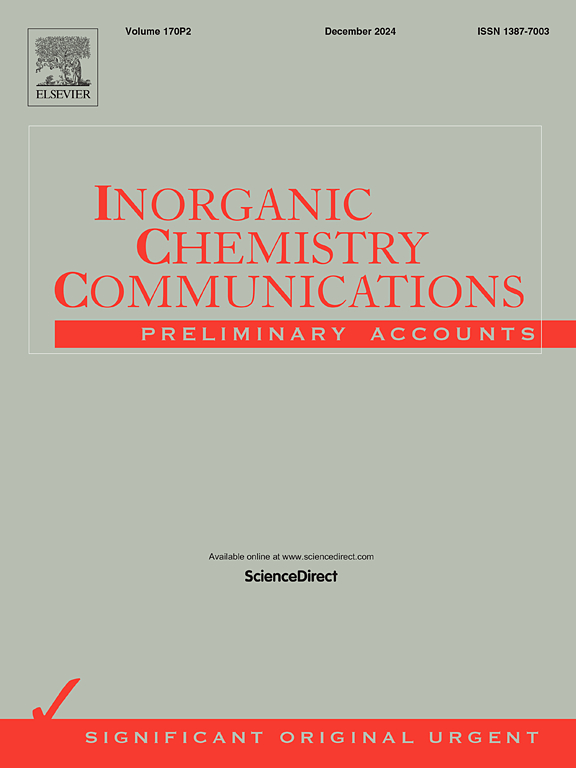Enhanced electrochemical performance of asymmetric supercapacitor device fabrication of Ni-BDC derived Ni(OH)2@Ni-BDC nanocomposite
IF 4.4
3区 化学
Q1 CHEMISTRY, INORGANIC & NUCLEAR
引用次数: 0
Abstract
Nanocomposites of metal–organic frameworks (MOFs) with metal hydroxide provide an effective approach to improve the ability of energy storage. Solvothermally prepared sheet-like Ni-BDC integrated with agglomerated β-Ni(OH)2 particles through a simple slow evaporation process in a water solvent system. The synthesized Ni-BDC@Ni(OH)2 exhibited a remarkable specific capacitance of 4979 F/g, as determined from galvanostatic charge–discharge analysis at a current density of 4 A/g, surpassing both Ni(OH)2 (507.96 C/g) and Ni-BDC (862.2 F/g) alone. The assembled Ni-BDC@Ni(OH)2//AC asymmetric energy storage device delivered a maximum energy density of 50.9 Wh/kg at a power density of 1527.1 W/kg. It also demonstrated good cycling stability, retaining 91.1 % of its initial capacitance after 5000 charge–discharge cycles. Seven devices were connected in series, charged for 2 min, and used to power a toy fan for 5 s. Two of the devices were stored at room temperature for one week. These two devices still have the ability to power LEDs for approximately 7 min. These findings offer crucial insights for advancing novel electrode materials that can simultaneously achieve high energy density and high-power density in energy storage applications.

Ni- bdc衍生Ni(OH)2@Ni-BDC纳米复合材料制备非对称超级电容器器件提高电化学性能
金属-有机骨架(MOFs)与氢氧化物的纳米复合材料为提高储能能力提供了有效途径。通过简单的缓慢蒸发过程,在水溶剂体系中制备了与凝聚的β-Ni(OH)2颗粒集成的片状Ni-BDC。合成的Ni-BDC@Ni(OH)2在电流密度为4 a /g时具有4979 F/g的比电容,超过了Ni(OH)2 (507.96 C/g)和Ni- bdc (862.2 F/g)。组装的Ni-BDC@Ni(OH)2//AC非对称储能装置在1527.1 W/kg的功率密度下,最大能量密度为50.9 Wh/kg。它还表现出良好的循环稳定性,在5000次充放电循环后保持了91.1%的初始电容。7台设备串联,充电2分钟,为玩具风扇供电5秒。其中两个装置在室温下保存了一周。这两种器件仍然能够为led供电约7分钟。这些发现为推进新型电极材料提供了至关重要的见解,这些材料可以同时在能量存储应用中实现高能量密度和高功率密度。
本文章由计算机程序翻译,如有差异,请以英文原文为准。
求助全文
约1分钟内获得全文
求助全文
来源期刊

Inorganic Chemistry Communications
化学-无机化学与核化学
CiteScore
5.50
自引率
7.90%
发文量
1013
审稿时长
53 days
期刊介绍:
Launched in January 1998, Inorganic Chemistry Communications is an international journal dedicated to the rapid publication of short communications in the major areas of inorganic, organometallic and supramolecular chemistry. Topics include synthetic and reaction chemistry, kinetics and mechanisms of reactions, bioinorganic chemistry, photochemistry and the use of metal and organometallic compounds in stoichiometric and catalytic synthesis or organic compounds.
 求助内容:
求助内容: 应助结果提醒方式:
应助结果提醒方式:


